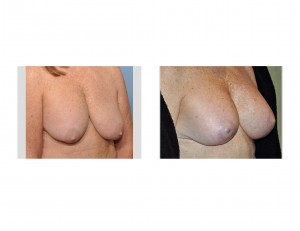Background: Breast augmentation is based on the principle of expanding one’s natural breast tissue by placing an implant behind it. Regardless of whether the implant is placed within the breast tissue above the muscle (subglandular) or beneath the muscle (submuscular), how it works is the same. As a result, how well most breast augmentations will look in the end has a lot to do with what the quality of the breast tissue was originally on top of it.
One of the most common complicating factors that affects many potential breast implant patients is breast ptosis. Known as sagging, and defined by where the nipple sits in reference to the lower breast fold, it creates concerns about how the breast augmentation should be performed and whether some form of a breast lift should be done at the same time.
On the long-term side of breast augmentation, the effects of aging, gravity and pregnancy can create ‘implant ptosis’. This is when the breast tissue has essentially slid off of the implant over time resulting in a nipple which is now on the ‘southside’ of the implant. This can occur when one has a fair amount of breast tissue to begin with and there was marginal or a grade 1 amount of ptosis initially present. A breast lift may have been initially avoided but eventually the tissues may stretch out, creating a need for such a procedure.



Case Highlights:
1) After breast augmentation, ptosis of the breast can develop over time if the tissues become stretched and loose. This can potentially give the appearance of breast implant deflation or rupture.
2) Whether the original breast implant is replaced or not, a breast lift is needed to reposition the nipple and put the tissues back up on top of the implant.
3) Breast lifts done with the placement of a breast implant or done secondarily with implant exchange or replacement result in scars. Breast lifts are about accepting the trade-off of scars for improving the appearance of ptosis.
Dr. Barry Eppley
Indianapolis Indiana


